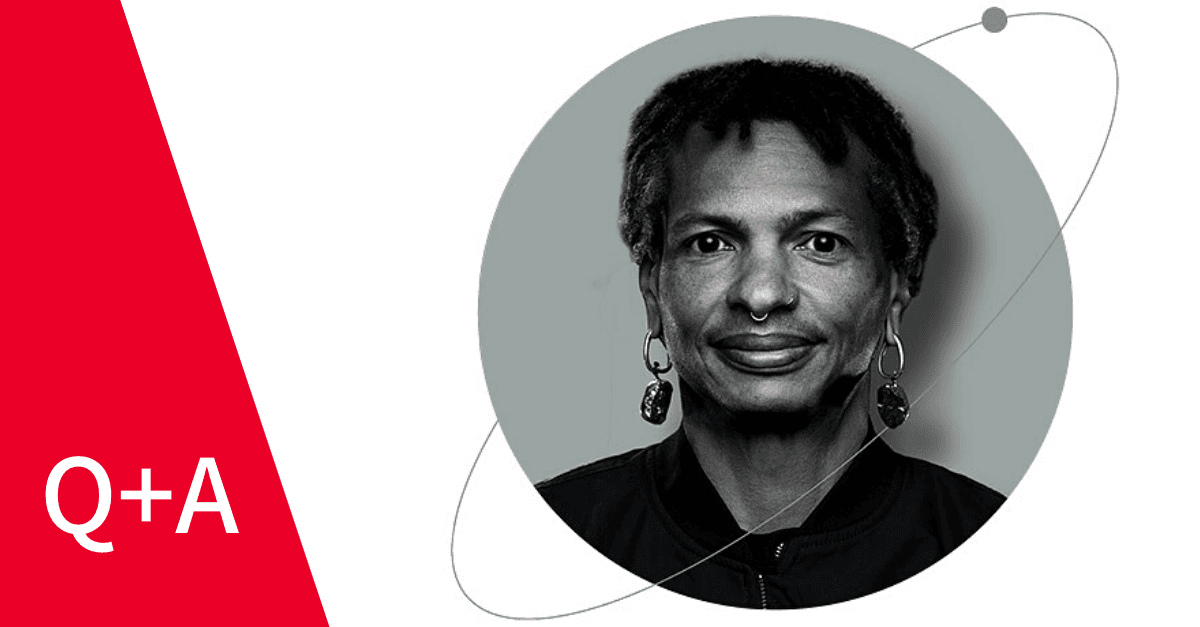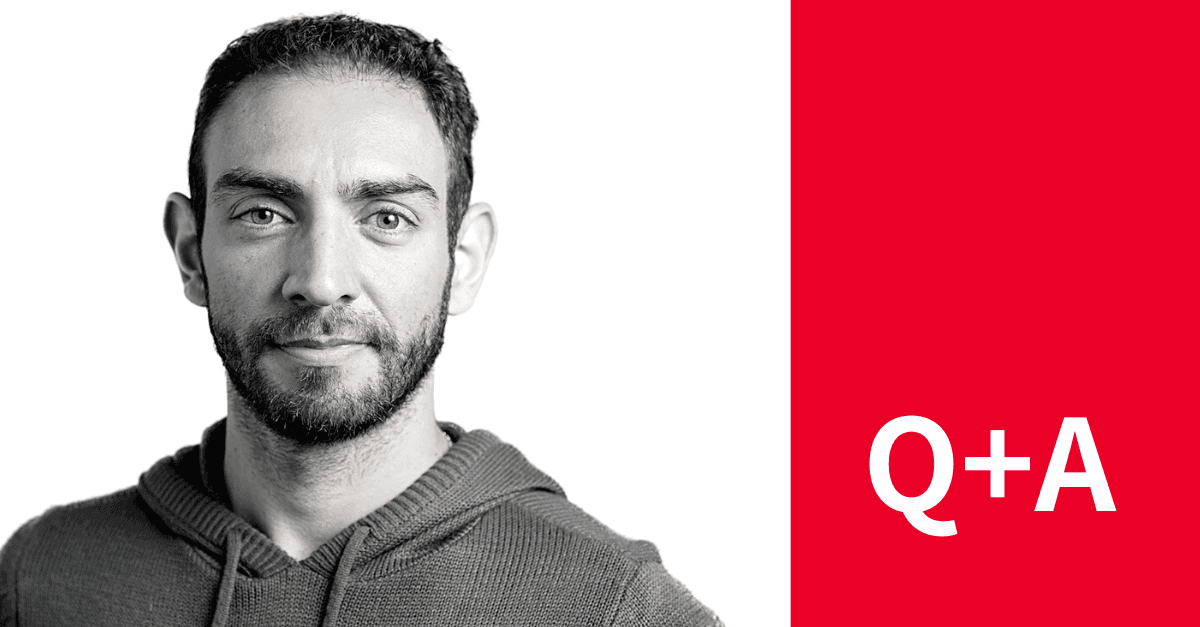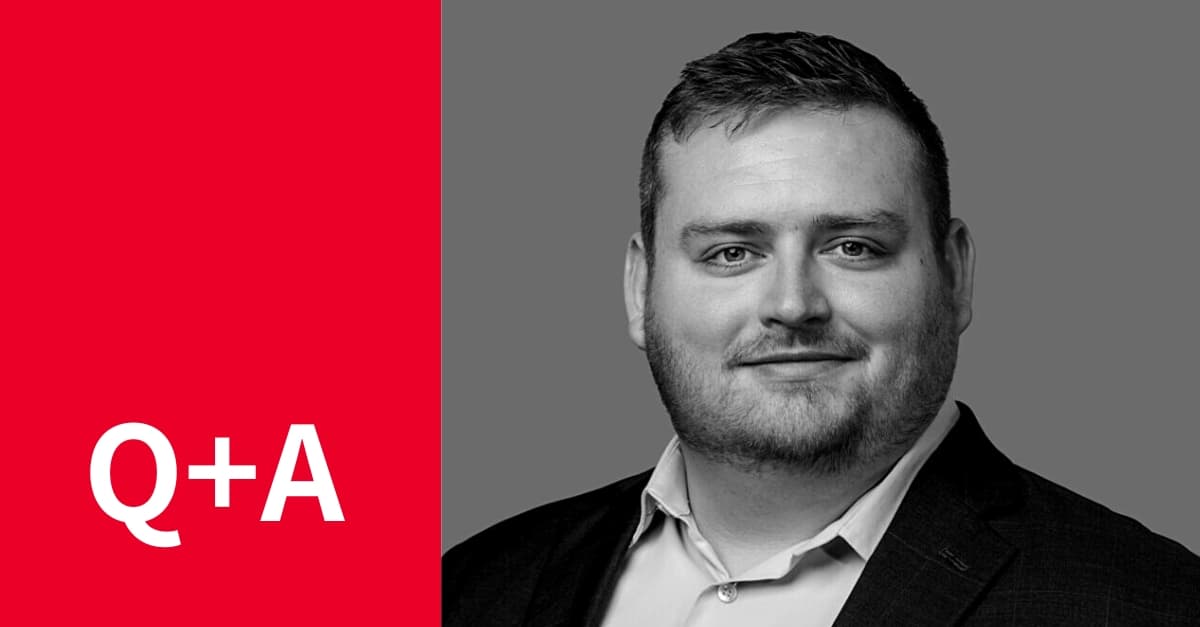Q&A with Dr. Moriba Jah

Tell us about yourself — what is your background, and how did you end up in your current position?
My background is in astrodynamics, which is the science that studies motion of stuff in space. I studied aerospace engineering, and found myself focusing on astrodynamics. I went to graduate school at The University of Colorado Boulder, and graduated from there with a PhD in aerospace engineering. I got a job at NASA’s Jet Propulsion Lab, where I was a Spacecraft Navigator for a slew of interplanetary missions, which include the Mars Odyssey mission and for the Mars Reconnaissance Orbiter.
After about six years at JPL, I left and moved my family to Maui, where I worked for the Air Force Research Laboratory. I changed my focus from stuff orbiting Mars and getting to Mars, to stuff orbiting the Earth. That’s when I became acquainted with our space debris problem. 96% of all the trackable objects in the Department of Defense catalog, at that time, were garbage. That was pretty crazy to me.
I found myself looking around at the juxtaposition of the debris problem we were creating for ourselves, and ecological unsustainability on the island of Maui with landfills. The Native Hawaiian culture embraces stewardship in all life, and that was being displaced by colonization and the notion of ownership of stuff. I started to make similar connections between the links of land, air and ocean, the consequences of the differences of those two perspectives on the environment, and how we’re treating space.
Eventually, I left the US Government and became an academic, focusing my research on issues regarding space safety, security and long term sustainability of our space environment.
I became a space environmentalist in the process, and am trying to link near-Earth space with other ecosystems.
Tell us about your research at The University of Texas at Austin: why is it important, who will it impact?
I think the uniqueness of my research at UT is that it is very transdisciplinary: even though my background is in astrodynamics, and tracking stuff in space, there’s also a need to connect with anthropology, social science, law and other disciplines to solve this wicked problem of space junk.
Basically, we’re tracking about 50,000 things in Earth orbit ranging in size from a cell phone to the International Space Station. Out of those 50,000 things, roughly about 5,000 of those are providing services and capabilities that we depend upon on a daily basis: anything from positioning, navigation and timing, to financial transactions, climate monitoring, and even monitoring wars like what is going on in Ukraine. The amount of data uniquely provided by satellite systems is immense. Nothing is protecting any of these satellites from becoming harmed due to a collision — something that, most of the time, we have a hard time predicting between two working satellites, let alone a piece of junk.
The research is looking at finding ways to make space more transparent. We’re working on cataloging what’s up there, who it belongs to, and what it can do. From there, we want to make space more predictable, starting with hours and going to weeks, trying to predict what any given space actors are going to do in common situations.
Lastly, we are developing a body of evidence, by which we can hold people accountable for their behaviors. This is tied in with the Strauss Center, where we’re connecting law and policy products to scientific products and trying to explain, quantify, assess, and predict the behavior of human-made objects in space.
What are some of the dangers associated with space junk and how is your work designed to address them?
What we currently are tracking is, at its smallest, the size of your cell phone, but space debris is dangerous even on a millimeter scale. A millimeter-size object flying at 15 times the speed of a bullet hits a satellite, and it’s a bad day for the satellite. If an astronaut is on a spacewalk and there is a collision, even with an object that small, it’s game over for the astronaut.
The danger is that, even with the objects we can track, we don’t know exactly where it is or where it’s going to go. The most concerning is what is untrackable, and the strategy we’re left with is hope: we hope that it doesn’t collide with something that we care about. That can’t be the way that humanity keeps on progressing and exploring different domains. We need to try to do something to flatten the curve on our behavior of the growth of junk in space.
Do you believe that the New Space Boom that we are currently experiencing, both in public and private sectors, will serve to help or impede space environmentalism?
I think it can help to serve it. I think that when everybody is just behaving in the ways that they want to, without coordinating that behavior with others, it raises the risk. But, I think it just underscores my point on the urgency for us to find ways to harmonize our behaviors and our actions in space, so that we can try to prevent a tragedy of the commons in the near-Earth space environment.
Most people think that outer space is infinite — but we put satellites on very specific orbital highways. In the ocean and in the air, there are currents that we use to our benefit, but if you fight the current, everybody knows that’s a bad proposition. Earth’s orbital lanes are becoming more congested because when man-made satellites die, they keep on going at the same speed within these pathways. There’s no off-ramp for these things and we just keep on launching more crap.
What are you most excited about in New Space?
I think the ambition: the ambition to explore, the ambition to just go beyond the status quo in terms of capabilities and how we can use space, and to better understand humanity. At the end of the day, we know more about planet Earth because of things we put in orbit. I think that New Space is delivering because we’re monitoring things and we’re tracking and trending data in real time, and in very accurate and precise ways. The concern that I have is the manner in which the exploration is done, which, by and large, is to the detriment of the environment. I believe that we can do more to avoid or reduce our impacts.
Do you think spacefaring entities will be more accountable and transparent in the future?
I want to make the evidence, of the intended and maybe unintended consequences of our behaviors and approach to space, very clear to everybody and then let humanity decide what is desired or not.
I was taught when I was a kid and went to campsites, “Pack it in, pack it out” for your trash, and I think that’s something we can do. And if it’s not a “pack it out’’ thing, then is it reusable and recyclable? If you leave it there, can somebody actually benefit from that and use it to build something else or add capability? We definitely need to minimize the use of single-use satellites, like single-use plastics.
The research that I’m doing at UT with Astriagraph as a crowd-sourced database has now been successfully operationalized by Privateer Space. With my co-founders Steve Wozniak and Alex Fielding, we plan to scale Privateer into something that’s 24/7, robust and resilient. The vision we’re working towards is one for space safety, security and sustainability. We want Privateer to act like a traffic app, but for space. We want users to not only input data, but interact with, and benefit from satellite tracking data as well.
What is your “path not taken” — what were you choosing between?
I definitely have an affinity for biological systems and I like being of service to others. The idea of wearable technology, like an Aura Ring or Apple Watch, I’d love to combine these sensors to try to determine ways to help individuals out. Maybe by combining these sensors and applications where you get to journal what you eat, maybe creating algorithms that could help people discover dietary sensitivities and these sorts of things to improve quality of life. One way or another, I would be focused on trying to help people’s quality of life, doing so in a way that doesn’t come to the detriment of other people. I’m really founded in the idea that all things are interconnected and stewardship is the way.
Anything else?
I can list technical challenges, I can list bureaucratic and policy challenges, but the biggest challenge, really, is how do we recruit empathy and compassion from people to solve these problems? That’s the biggest challenge. If we define empathy as the ability to project oneself into the perspective and conditions of others and resonate with them, my question to myself is how, in my work, can I promote empathy? If I can promote empathy, how do I do so in a way that’s so compelling that once people are empathetic to it, they feel the concern and the compassion to solve it?



